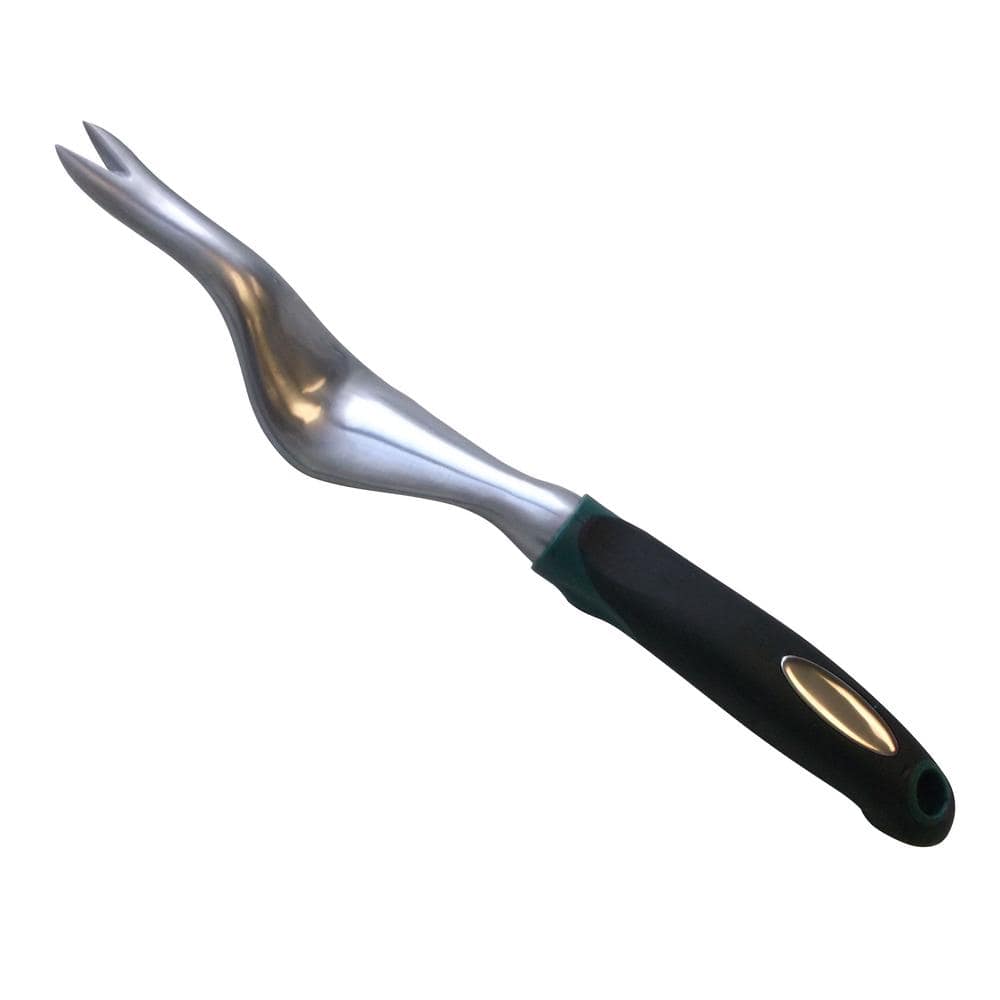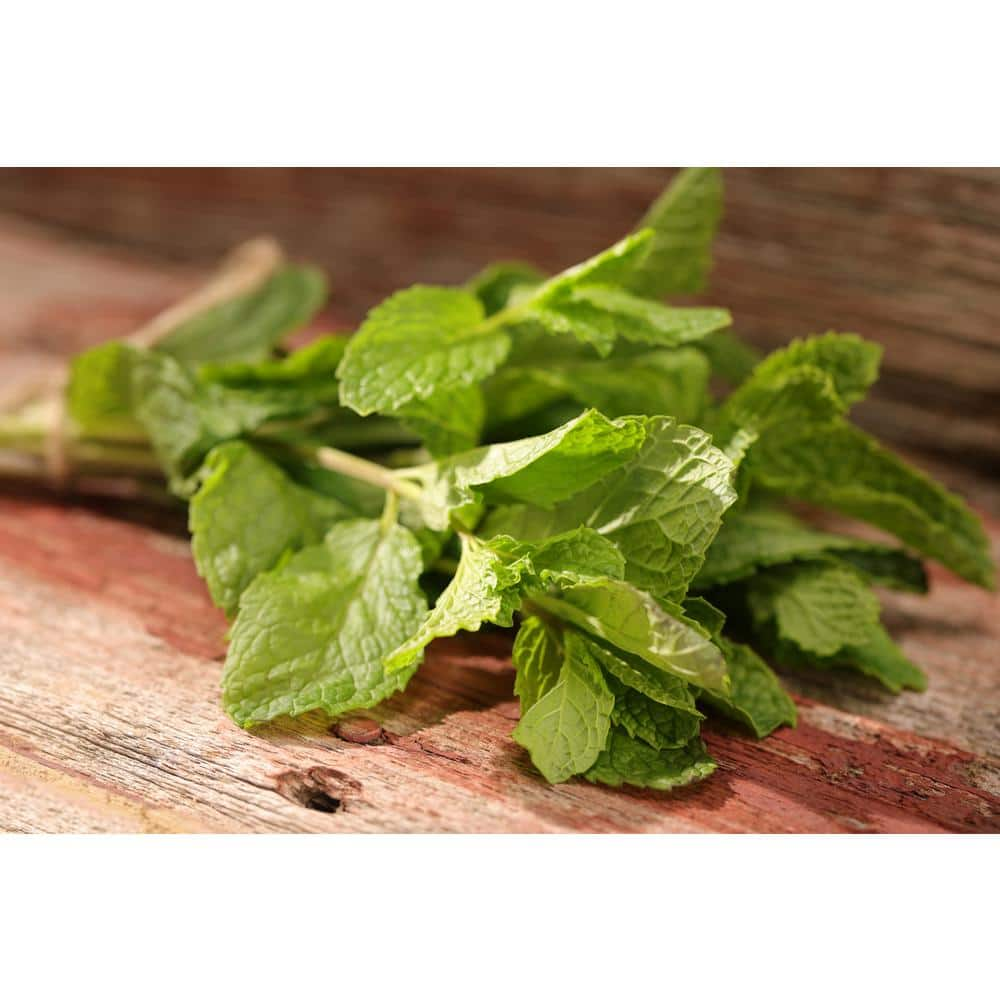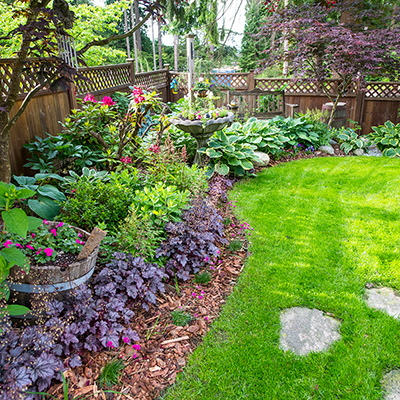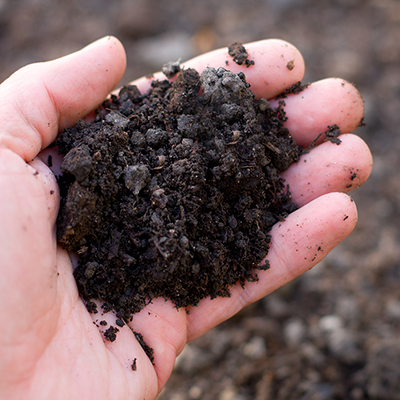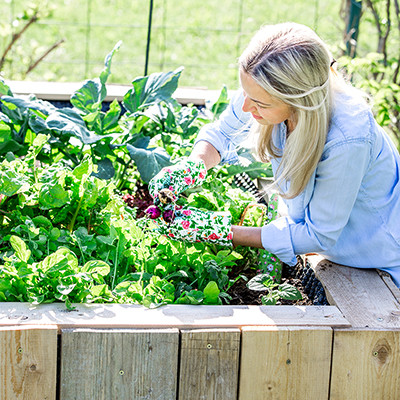Summer Vegetable Gardening 101

Last updated September 7, 2023
As temperatures climb in late spring, you may think that it’s too late to start a vegetable garden. It’s not! You may not be able to grow tomatoes from seed and see fruit this season, but start with seedlings, and you'll have a fine garden.
No matter the size of your gardening space, you can grow tomatoes, peppers and many other vegetables and herbs. Small space vegetable gardening can be productive. You can pack a lot of produce into a small space like a patio or deck. Elevated garden beds, planters and stock tank containers make it easy. Place your garden in a full sun site and provide plenty of water for your vegetables.
If you’re blessed with a backyard, you can grow vegetables directly in a vegetable bed. Raised garden beds are ideal for intensive planting methods like square foot gardening. This method uses small raised beds for highly productive and space-saving vegetable gardens. Square foot garden plans use 80 percent less space than traditional row gardens.
In this guide, learn how to grow a great summer vegetable garden.
Table of Contents
Know Your Site and Light
Build Up Your Soil
Plant Your Garden
Care for Your Garden
Harvest Vegetables and Herbs
Succession Crops and Planning a Fall Garden
Know Your Site and Light

Summer vegetables love sunlight. The more sun you can give them, the more they will reward you with produce. Vegetables like tomatoes, squash and peppers like full sun. That’s at least 6 to 8 hours of sunlight each day. Morning sun is best. Afternoon sun may be harsh for some plants.
It's possible to have too much sun on your garden. Tomatoes and peppers, for example, may get sunscald. This is simply where harsh sun reaches tender vegetables and burns the skin. The solution is to simply shield vegetables with screening or row cover.
When selecting a site, make sure your garden has access to water. Vegetable gardens need at least an inch of water each week. The water can be from irrigation or from rainfall. Drip irrigation makes gardening more efficient. Install drip irrigation for consistent watering and lower water bills.
Raised garden bed plans and kits come in different styles and sizes. These are great for growing herbs as well as vegetables.
Raised garden bed kits offer a simple, fast way to begin gardening. Raised bed kits require just a few tools and basic skills to assemble. They are easy to install following the manufacturer’s instructions.
Kits are available in a range of sizes and materials. Most raised garden beds are the open-bottom variety placed on the ground. Elevated garden beds have legs that raise them up. These are perfect for small patios or decks. Elevated garden beds require less bending and squatting to reach the plants.
Build Up Your Soil
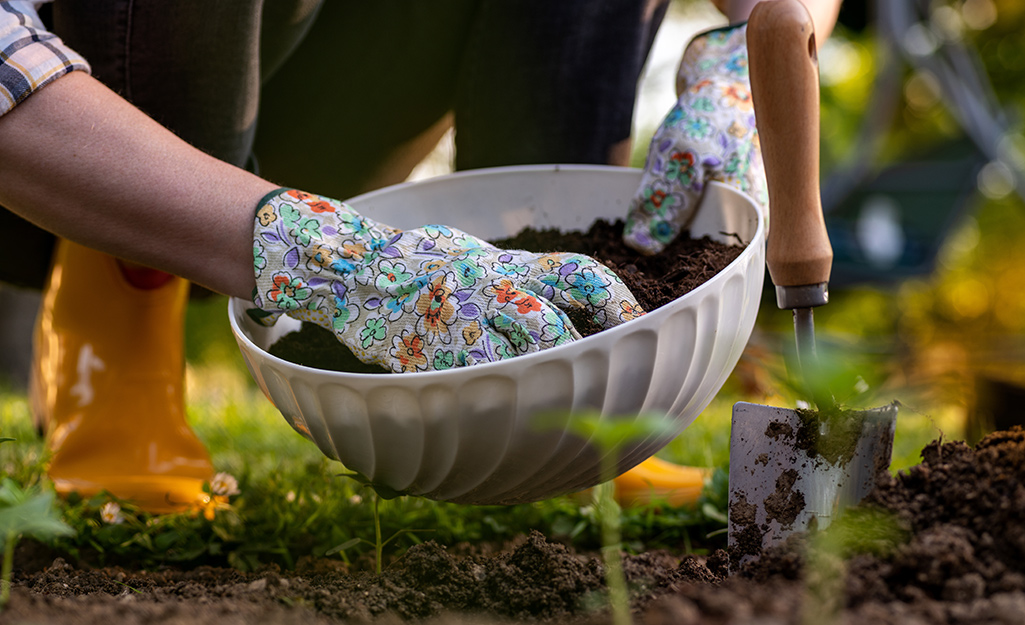
Each season, take time to improve your soil quality. If you're a beginning gardener, start with a soil test from your local Cooperative Extension office. Soil tests measure pH and recommend amendments. The reason pH is important is for nutrient intake. Vegetables grow best when soil pH is acidic, about 5.8 to 6.5. At this level, plants are able to optimize the nutrients in the soil.
Top dress an existing garden bed with organic compost before planting. If you’d like, mix in a slow-release organic fertilizer. Compost adds structure to soil. Soil amended with compost gives roots access to oxygen that will help them grow.
More amendments for your garden:
- Vermicompost is worm castings. Make your own with a worm bin or purchase finished vermicompost in the Garden Center. Vermicompost improves soil structure, increases water and nutrient holding capacity, and promotes plant growth. You don’t need much – count on about 1/4 cup vermicompost per plant.
- Biochar is an organic, carbon-based soil amendment. It increases microbial activity, restores nutrients and helps soil retain moisture. Apply biochar by mixing with compost first before adding to your garden.
- Composted manure. If you live near horse or cattle farms, you can purchase composted manure. Be careful when you do this and make sure you know what the animals have grazed on. Some herbicides are persistent even to composted manure and that can damage your garden plants. Purchase organic composted manure for peace of mind.
Learn more about types of soil.
Amend soil in an existing garden before planting and again during the growing season. A top dressing of organic compost mid-season gives plants a boost of nutrition and protection for tender roots. Add compost and garden soil as you pull out and replace plants during the garden season. For example, you may have determinate tomatoes that have run their course. When this happens, just pull them out and throw them away, then dig up the soil and refresh with more garden soil and compost.
Plant Your Garden
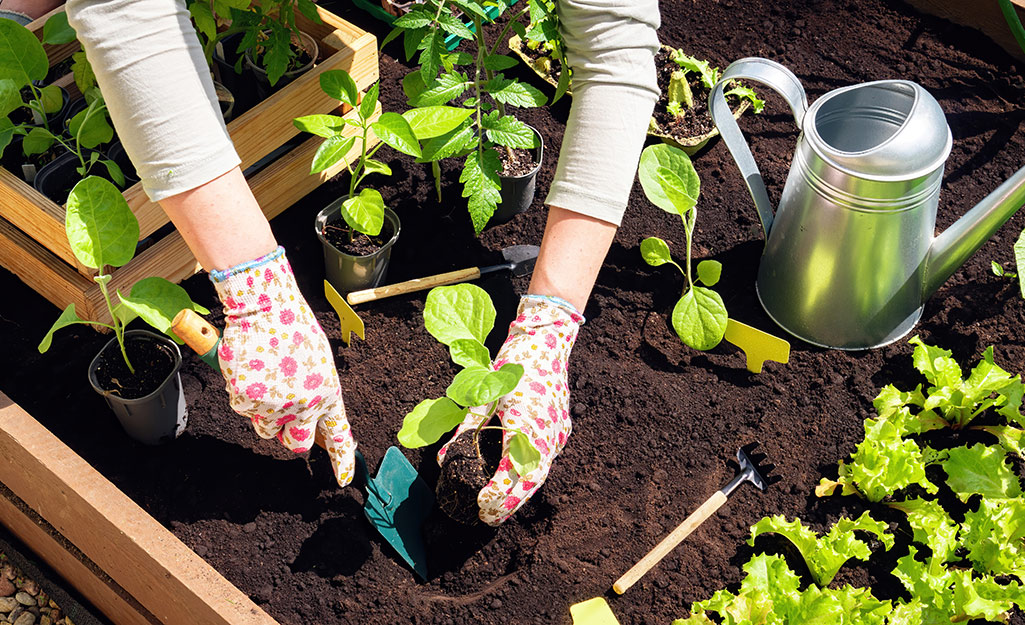
The first rule for planting your vegetable garden is Plant What You Want to Eat.
Popular warm season vegetables include:
- Corn (grown from seed, reaches maturity in 60 to 100 days)
- Cucumbers (seed or seedling, seedlings mature in 50 days)
- Eggplant (seed or seedling, with seedling harvest in 50 days)
- Green beans (seed, maturity in 45 to 60 days)
- Peppers (seed or seedling, seedlings ready to harvest after 60 to 90 days)
- Tomatoes and cherry tomatoes (seed or seedling, 60 to 100 days to harvest)
If you’re starting your garden after Memorial Day, it’s best to plant seedlings. They will mature faster in the longest days of the year. Exceptions: green beans and cucumbers are both prolific growers and can be directly sown in the soil for late summer harvest. Read seed packets and select quick-growing varieties.
Expert gardeners recommend purchasing both seeds and seedlings to stagger the harvest. In the Garden Center, look for patio type tomatoes, peppers and eggplants sold in attractive containers. They will often have fruit already forming. You can place these containers on your deck or in your garden, and trust you’ll have a bountiful harvest.
When you’re planting, be sure to follow instructions on the seed packet and plant tag. Prep the soil with compost or a slow-release organic fertilizer. Plant in the cool of the day, either morning or evening. Overcast days are best for new seedlings. Be gentle when turning new seedlings out of their containers. Give fresh seeds and seedlings plenty of water the first few days to establish roots.
Tip: Versatile grow bags work like mini-raised beds in your garden. Fill them with soil and seedlings and place them throughout your garden. If you have a fence, place grow bags with indeterminate tomato plants alongside and tie the branches along the fence. This improves air flow and helps the plants grow.
Care for Your Garden
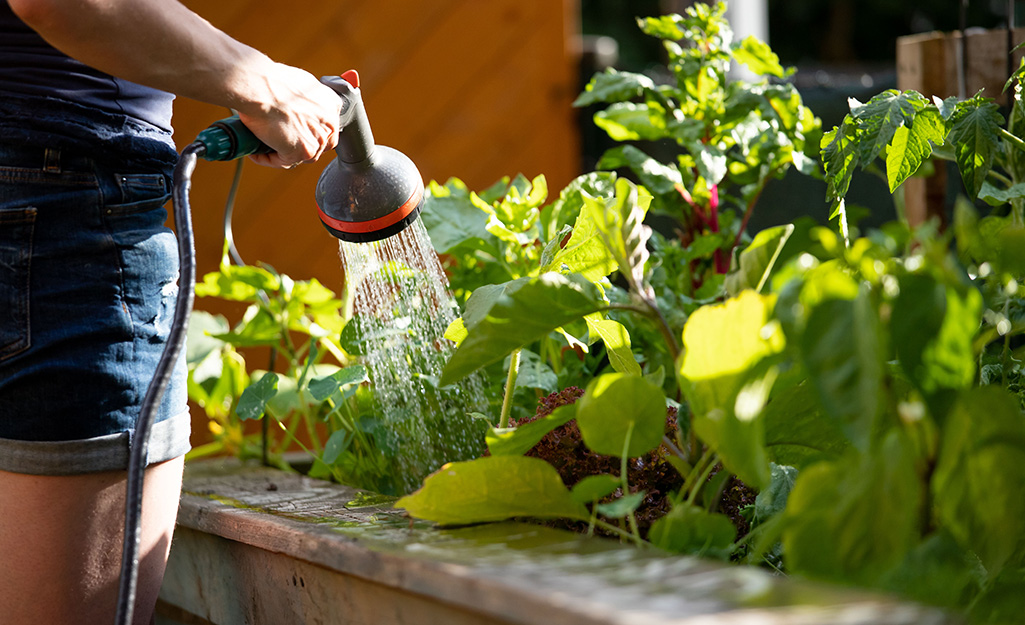
Vegetable gardens need about an inch of water each week, either by rainfall or irrigation. In times of extreme heat, you’ll need to water more often. A blanket of mulch around your plants helps regulate the soil temperature, keep roots cool and slow evaporation.
In mid-summer, you’ll likely experience insects attacking your plants. Insects that thrive in hot weather include thrips, aphids and spider mites. Japanese beetles, armyworms and tobacco hornworms are common, too.
Knock small insects like aphids off your plants with a water hose. Japanese beetles, army worms and hornworms can be picked off and dunked in a bucket of soapy water. You can spray organic neem oil, too. Preventive organic treatments will eliminate some of these insects. One popular treatment, Bt (bacillus thuringiensis), is used to kill caterpillars.
One effective strategy is to increase beneficial insects in your garden. Plant flowers, shrubs and trees that beneficial insects enjoy. Beneficial insects include ladybugs, lacewings, assassin bugs and parasitoid wasps. Learn more about planting for beneficial insects.
Over time, help your garden build resilience to pest and disease pressure when you improve soil with organic matter.
Harvest Vegetables and Herbs
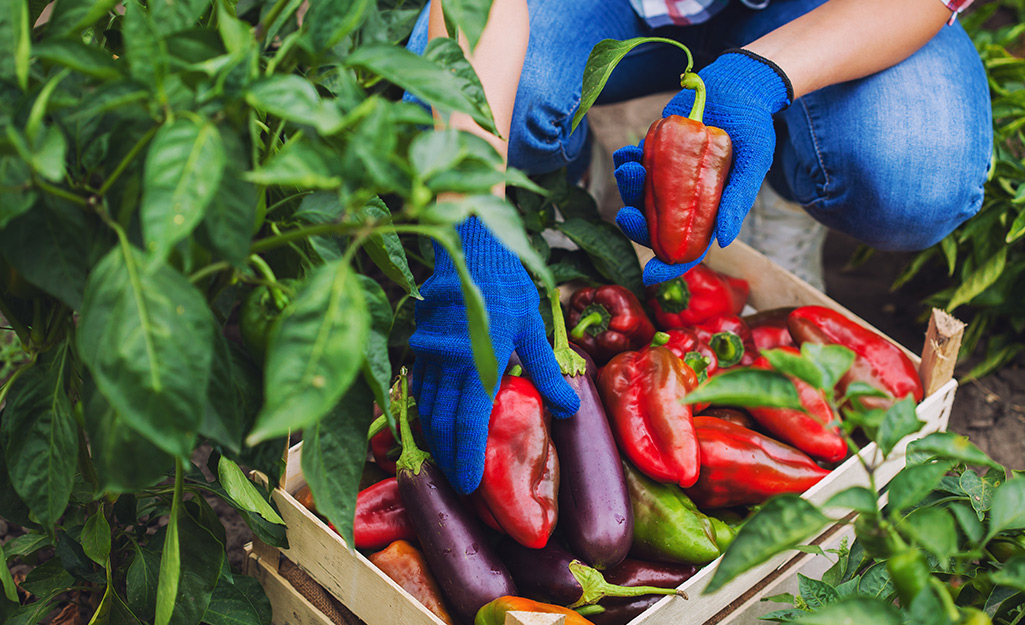
The harvest makes all the work worthwhile. Knowing when to pick vegetables can be tricky. For instance, the rich color that signifies a ripe tomato comes from warmth, not light. If temps are cool, go ahead and pick fruit that’s not fully colored and bring them inside to ripen.
This is the breaker stage – when the “shoulders” of the tomato start to color. They’re considered vine-ripened at this point.
The harvesting rule for vegetable gardens is to pick early and pick often. Pick the following when they're young and tender: beans, beets, carrots, cucumbers, yellow squash and zucchini. Picking early and often stimulates growth because plants want to produce seeds. Pick fruit before it forms seeds so the plant puts energy into creating more fruit.
If you wait too late to pick some vegetables, the plants stop producing. Vegetables harvested late can grow tough or woody.
Pick vegetables early in the day when it’s cool. Bring a basket and a garden knife or scissors with you to the garden. When picking root vegetables, water the soil first to loosen the roots.
Harvest leaves and stems of most herbs throughout the growing season. In fact, many plants respond to frequent harvesting by generating fresh, flavorful new growth.
Tips for harvesting herbs:
- Basil: Begin pinching leaves once the plant becomes 6 to 8 inches tall. Keep plant pinched even if you’re not harvesting leaves. This will keep it from flowering.
- Dill: Harvest dill fronds between seedling and flowering stages.
- Oregano: Snip sprigs as needed. Harvesting encourages new growth.
Succession Crops and Planning a Fall Garden
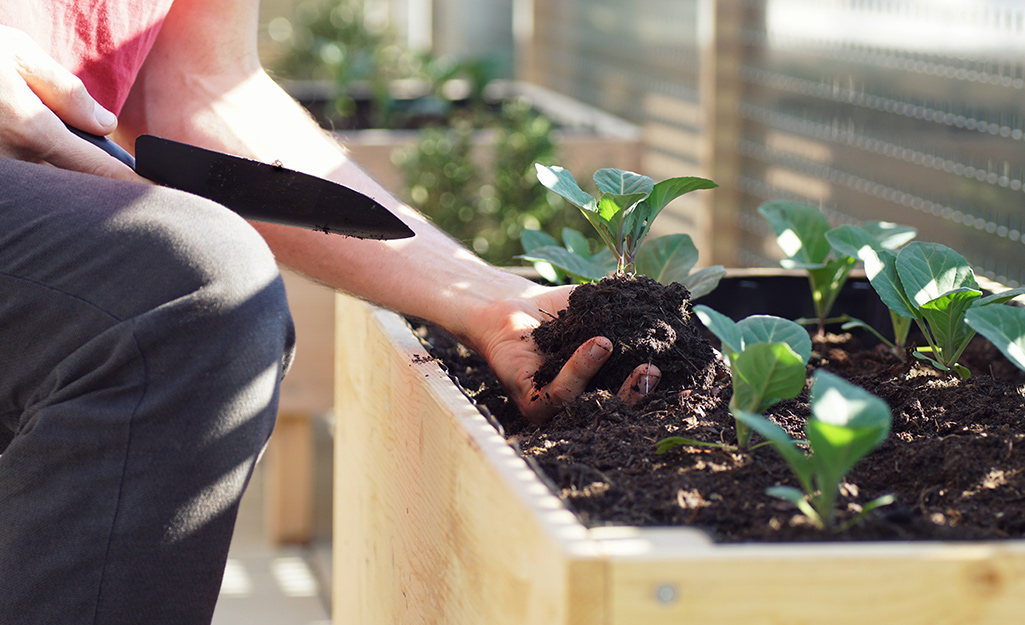
Try succession planting to get a start on your fall garden. This means staggering plantings for a continual harvest. It’s a smart way to make the most of limited garden space and maximize harvests of your favorite crops.
Successively plant most summer crops like tomatoes, peppers and beans, hoping for fruit right up until frost. Get started by looking for "days to maturity" on seed packets and knowing your area’s date of first frost. Count back for the best date to have your crops in the ground.
Summer favorites like sweet corn can be succession crops. Just plant the 50 to 60 day seed varieties. Start seeds in trays and then set seedlings out.
Try sowing successive crops of short-term herbs like cilantro. The seeds germinate fast in the warm soil and enjoy the cooler nights of late summer. Find the coolest part of your garden for cilantro when planting in mid-summer.
Fall crops like collards and kale can handle frost. In many cases the veggies sweeten after temperatures dip below freezing. (Vegetables get sweeter because freezing temperatures turn starches into sugars.)
Root vegetables like carrots, celery, parsnips and radishes like the fall weather, too. Plant them in your late summer garden after you've pulled out spent crops.
Don’t overlook container gardening in a season-spanning garden. Use grow bags and planters to start crops like bok choy while the summer garden is finishing up.
Growing vegetables and herbs in your garden lets you connect what you grow with what you eat. Whether you need the right tools, seeds and soil, The Home Depot delivers online orders when and where you need them.







